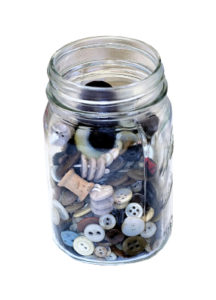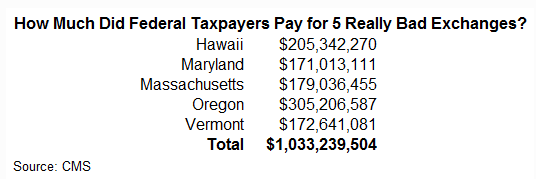07 May 2014 Health Care Odds & Ends: ObamaCare Exchanges Edition
 1. Non-payment of premiums and duplicates. Two things you’ll be hearing out of the Energy and Commerce Committee hearing today is that roughly 20 percent of exchange sign-ups have not paid their first premium and something new known as “duplicates.”
1. Non-payment of premiums and duplicates. Two things you’ll be hearing out of the Energy and Commerce Committee hearing today is that roughly 20 percent of exchange sign-ups have not paid their first premium and something new known as “duplicates.”
Naomi Lopez Bauman of the Illinois Policy Institute explains how duplicates will affect final enrollment numbers.
According to [AHIP] testimony:
“Duplicate enrollments: Because of the challenges that surfaced with the launch of the Exchanges in October 2013, some consumers were advised to create a new account and enroll again. As a result, insurers have many duplicate enrollments in their system for which they never received any payment. In cases where an insurer has a new enrollment for a consumer who previously enrolled, they are not expecting that original policy to be effectuated – even though that data is still reported.”
In other words, due to website glitches, some individuals may have enrolled multiple times. In these cases, the government may count all of these enrollments toward the total enrollment number. The insurer, knowing that the individual enrolled multiple times, will count that individual as having paid.
For example, if there are three people with one enrollment each and one person with two enrollments, the government will report this as five total enrollments. If the first three people paid for each of their policies and the fourth person paid for one policy, the insurer will report 100 percent payment. In this way, the government numbers may be further overstating enrollments.
If only 80 percent of enrollees pay premiums, then enrollment will be around 6.4 million, not 8 million. The number of duplicates (and we don’t know how many duplicates there are) will further erode that number.
2. The idiots in Oregon, Hawaii, Maryland, Vermont, and now Massachusetts. Massachusetts is the latest state to junk its insurance exchange website. Oregon and Maryland have also scrapped their exchanges, while Hawaii and Vermont continue to have major problems. Here’s Phil Kerpen’s analysis of how much it has cost federal taxpayers to run those exchanges:

Over at Investor’s Business Daily, John Merline notes: “Add it all up, and ObamaCare’s startup cost is at least $6.7 billion. Even if every one of the 8 million enrollees pays their premiums all year, the cost is more than $837 per sign-up. And if recent surveys are correct that just a third of enrollees previously lacked coverage, ObamaCare will have cost $2,500 for each newly insured person.”
An encore of John Oliver on Oregon (Warning: strong language):
3. Encounters with a Hack. Michael Cannon of the Cato Institute made the argument that ObamaCare sets up incentives for people to go without insurance. Michael Hiltzik (who else) of the Los Angeles Times makes the unfounded claim, not once, but twice, that Cannon is advocating people should go without insurance. In the process, Hiltzik shows his intellectual caliber by calling Cannon’s argument not just “obtuse” but “blindingly obtuse,” along with “clueless,” “ghoulish,” and “asinine.” Cannon, of course, handles it like the classy gent he is.
I’ve had my own encounter with Hiltzik. I’ve also had a similar encounter with Brian Beutler of Salon who falsely accused me of encouraging people to go without insurance. Birds of a feather…
4. Young and Not-So-Invincbles. One of the crucial indicators as to whether the ObamaCare exchanges will enter a death sprial is the number of 18-34-year-olds—the “Young Invincibles” who will sign up. However, the 18-34-year-olds may not be that invincible—i.e., they’ll have substantial medical claims—as many of us initially thought. I’ve written about that here. Here’s more suggestive evidence. The Gallup poll surveyed the newly insured on the exchanges and found that about 43% of sign-ups ages 18-64 said they were in excellent or very good health, versus 51% of all people 18-64. Now, that could mean that we have an inordinate number of unhealthy people among that 50-64 age cohort. On the other hand, many of the 18-34-year-olds in the exchange may be less healthy than 18-34-year-olds are generally. Gallup didn’t break it down by age, so we can’t know for certain. Either way, though, it’s another hint that a death spiral is coming.



